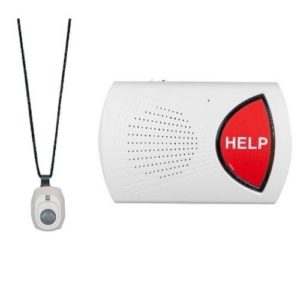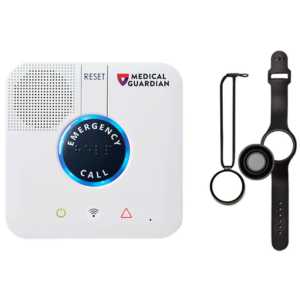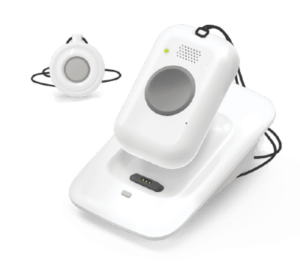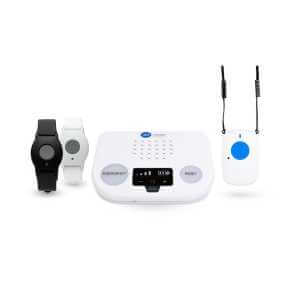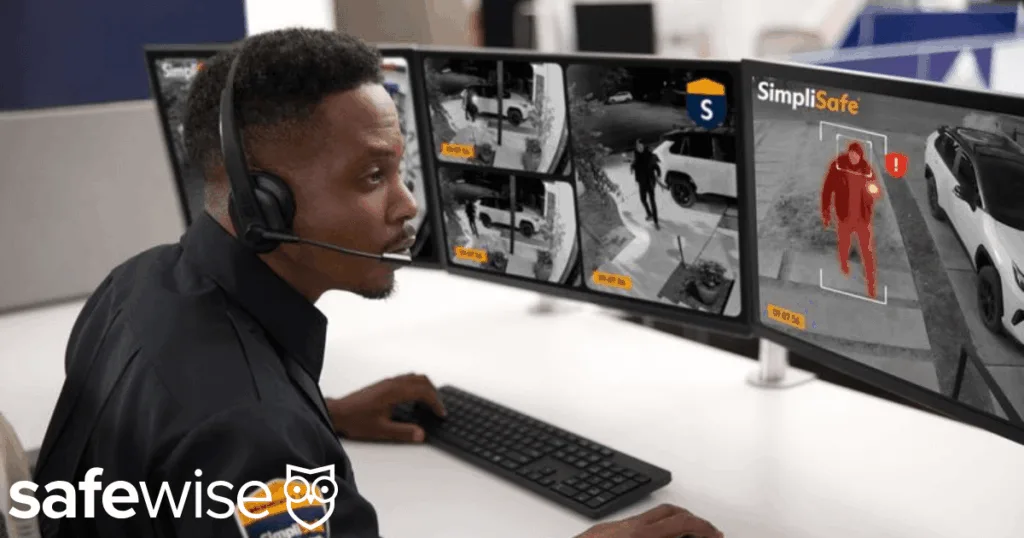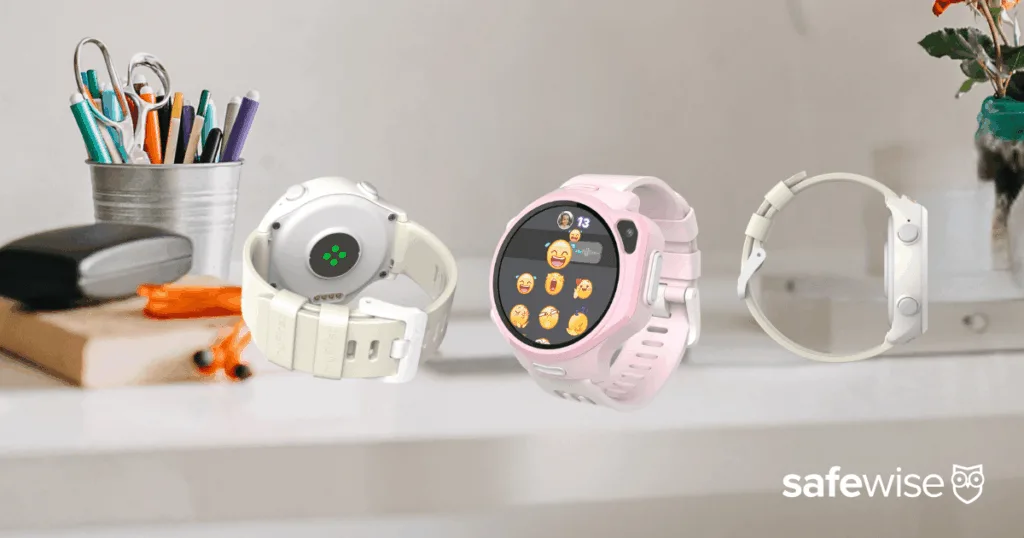Panic buttons need to be pressed and held for several seconds. You should hear a sound or see a light to confirm that the button has been activated. A monitoring professional from the home security or medical alert company speaks to you through the system's base station or control panel. It shouldn't take more than a minute for someone to pick up.
The monitoring professional then notifies the appropriate personnel—such as the fire department, emergency medical personnel, or law enforcement—based on your emergency.
If you can't speak to describe your emergency, the monitors dispatch first responders to make sure you're okay.
Common panic pendant features
Most models can be conveniently worn around the neck, carried in a pocket, or clipped to a belt. Often, panic “pendants” can also be worn as a watch. Some of the most popular panic buttons are waterproof so they can be worn in the shower or tub.
Depending on the manufacturer, panic pendants work up to a few hundred feet from the base unit. Some panic buttons are all-in-one units with built-in speakers that can be worn outside the home.
Learn more in our guide to the best medical alerts with GPS and explore the different types of medical alerts.
What if I don't want to wear a panic button?
The only time you truly need to wear a panic button around your neck is if it has an automatic fall detection sensor. These must be worn near your breastbone for accurate results.
Otherwise, you have plenty of other options for getting quick help during an emergency:
You can also dress up your panic pendant with jewelry covers to make it look less like a medical device and more like a fashion accessory. See our favorite medical alert necklaces.
Which security companies sell panic pendants?
If you want to combine a security system with a wearable panic button, we recommend ADT. It's the only home security company with its own medical alert off-shoot. Plus, ADT's industry experience can't be beat—you'll get fast, quick help no matter the situation. Learn more about ADT's Medical Alert products.
These home security companies also feature panic pendants or buttons:
Can I use it during any emergency?
Yes. Even if you get your panic pendant through a medical alert company, you can push it any time you need help—even if it's not a medical situation. If someone's breaking in, someone's following you, or your house is on fire, push that button!
The same goes for panic devices monitored by security companies. You can push them any time you need help—even if it's a medical emergency rather than a security threat.
Do I have to pay a monthly fee for a panic pendant?
No, but we highly recommend it. Paying a monthly fee gives you access to a professional alarm monitoring center. They're very forgiving about false alarms and keep some of your personal information—like your hospital preference, emergency contacts, and lockbox code—on file for speedy results.
If you choose a panic pendant with no monthly fee, like FastHelp, your calls go directly to the 911 dispatch center. You can be charged for false alarms, and the center won't have your personal information on hand.
How do I know my panic pendant's battery still works?
You're encouraged to test the panic pendant on a regular basis—typically once a month—to make sure it still works. This gives you time to request a replacement before an emergency takes place. Just press and hold the button and wait for the monitoring center to answer your call. Then, inform them you're just testing your equipment.
Check with the manufacturer or monitoring company to find out how long your panic pendant's battery typically lasts. Some keep going for up to 10 years, but most need to be replaced after about five years.
In many cases, the pendant sends a low-battery signal to the monitoring center when it's time for a new one. Depending on the company's policy, they'll either send you a new pendant for free or remind you to change the battery on your current pendant.
Other pendants may chirp or display a flashing light when their batteries run low—much like a smoke alarm.
